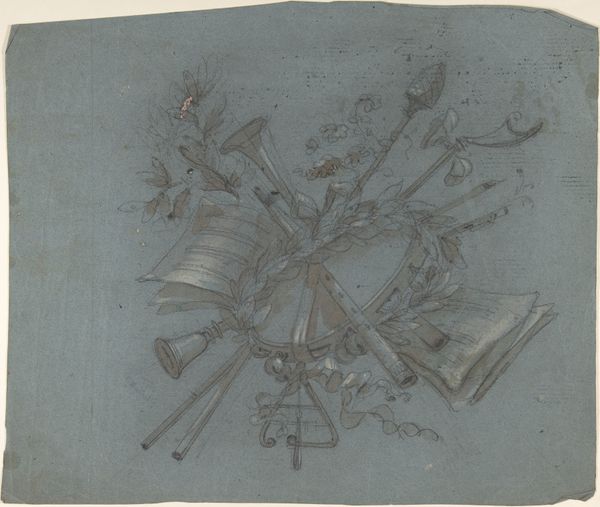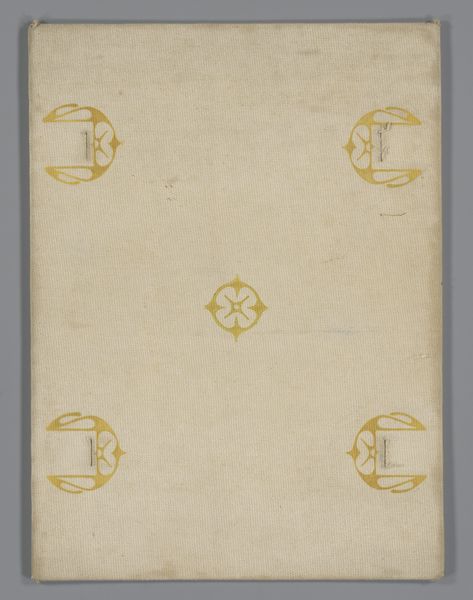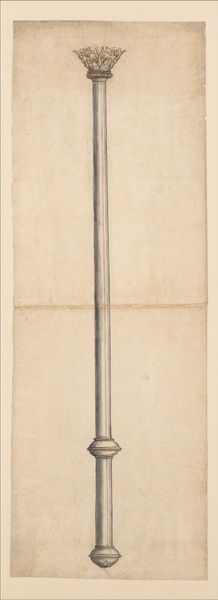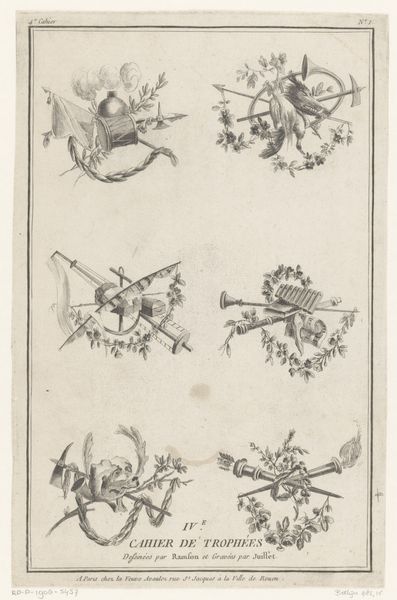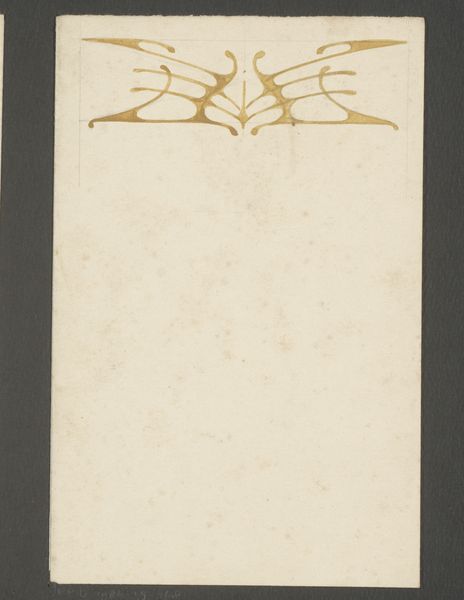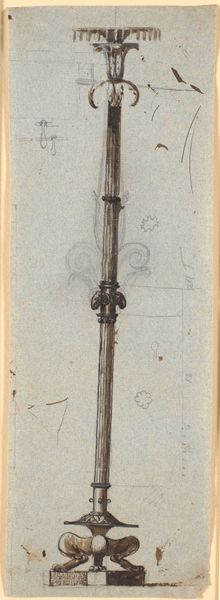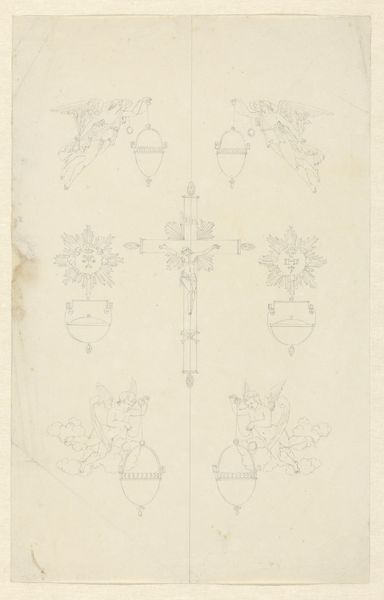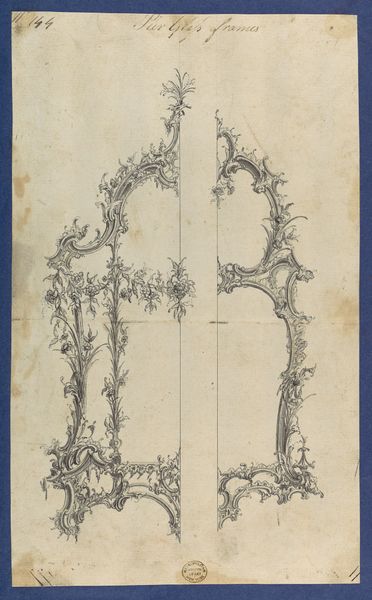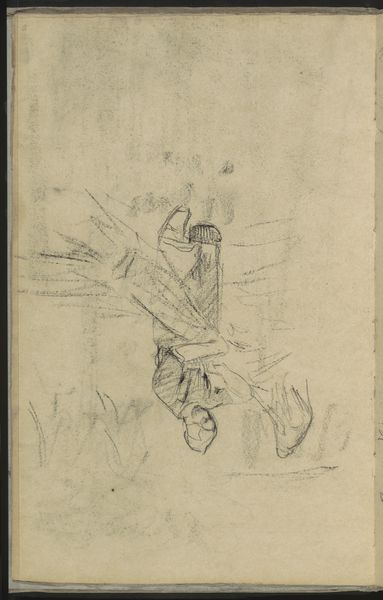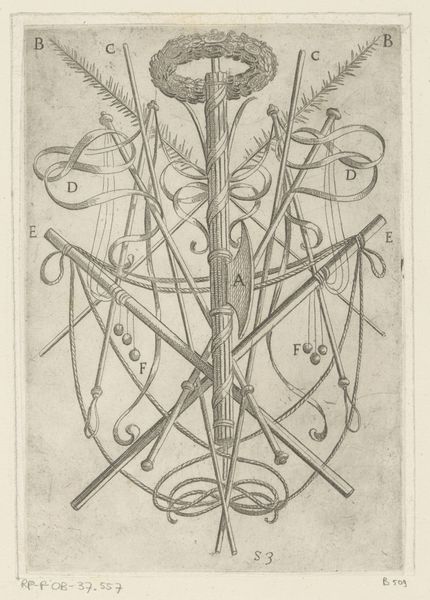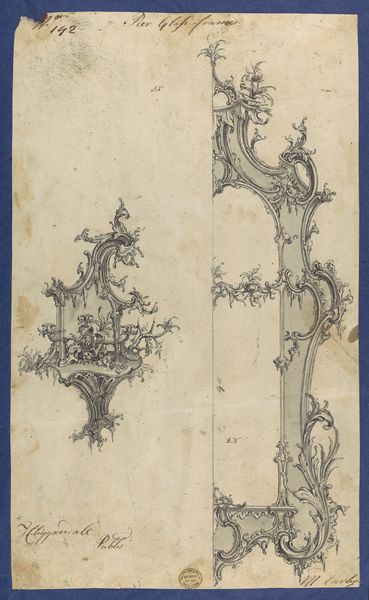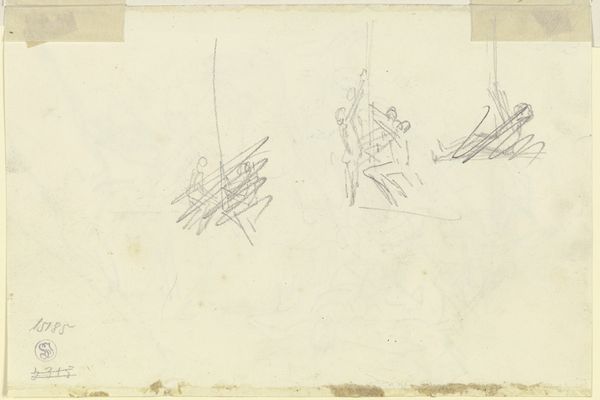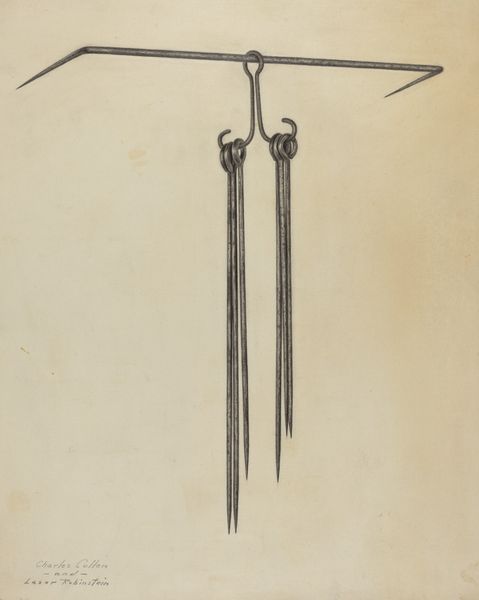
drawing, paper, pencil
#
drawing
#
paper
#
pencil
#
academic-art
#
watercolor
Dimensions: height 259 mm, width 346 mm
Copyright: Rijks Museum: Open Domain
Curator: Looking at this drawing, the weapons are presented as almost lifeless trophies. Editor: Indeed. Here, at the Rijksmuseum, we have "Halberd with Two Swords," created sometime between 1850 and 1900 by Médéric Mieusement. It's rendered with pencil on paper. The academic style really shines through. Curator: It feels deliberately muted, doesn't it? There's a very ghostly quality, with the overlapping weaponry suggesting past battles, like the faint echoes of clashing steel, now silent. Almost ceremonial in its stillness. Editor: Right, weapons removed from any particular violent event or socio-political turmoil become abstract. Almost architectural. Mieusement's arrangement aestheticizes weaponry and hints at the romanticism afforded by a distance to violence. It becomes a neutral study in design, shadow, and light. Curator: And weapons are, by their nature, deeply symbolic. These are no longer implements of death, but markers of rank, valor, and social status. You've got the solid practicality of the halberd standing as an almost archaic symbol of power. The swords evoke courtly duels, almost codes of behavior and concepts of honor. Editor: Definitely. By choosing these items, the artist hints at social conventions and rituals around conflict and chivalry, referencing the symbolic importance of these objects and potentially valorizing aspects of a certain historic culture. Curator: Do you feel there is a romantic sentimentality about warfare implied? It’s easy for modern viewers to forget their historical cultural significance and symbolic gravity. It serves as a fascinating case study in how objects accrue psychological weight. Editor: Perhaps, yes, but presented now in this museum, it sparks contemplation. Do we question the power they once held? I can't help but feel that Mieusement's drawing opens that dialogue across history. Curator: I agree. Art like this really compels us to reflect not just on history, but on our current understanding of the symbols that shaped it. Editor: Absolutely.
Comments
No comments
Be the first to comment and join the conversation on the ultimate creative platform.
